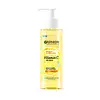What's inside
What's inside
 Key Ingredients
Key Ingredients

 Benefits
Benefits

 Concerns
Concerns

 Ingredients Side-by-side
Ingredients Side-by-side

Water
Skin ConditioningAlcohol Denat.
AntimicrobialNiacinamide
SmoothingGlycerin
HumectantPropanediol
SolventLinalool
PerfumingGeraniol
PerfumingSodium Hydroxide
BufferingSalicylic Acid
MaskingAscorbyl Glucoside
AntioxidantLimonene
PerfumingHydroxypropyl Guar
Emulsion StabilisingHydroxyacetophenone
AntioxidantHydroxyethylpiperazine Ethane Sulfonic Acid
BufferingCitrus Limon Fruit Extract
MaskingLactic Acid
BufferingPhytic Acid
Benzyl Salicylate
PerfumingBenzyl Alcohol
PerfumingPEG-60 Hydrogenated Castor Oil
EmulsifyingParfum
MaskingWater, Alcohol Denat., Niacinamide, Glycerin, Propanediol, Linalool, Geraniol, Sodium Hydroxide, Salicylic Acid, Ascorbyl Glucoside, Limonene, Hydroxypropyl Guar, Hydroxyacetophenone, Hydroxyethylpiperazine Ethane Sulfonic Acid, Citrus Limon Fruit Extract, Lactic Acid, Phytic Acid, Benzyl Salicylate, Benzyl Alcohol, PEG-60 Hydrogenated Castor Oil, Parfum
Water
Skin ConditioningGlycerin
HumectantPEG-200 Hydrogenated Glyceryl Palmate
CleansingCoco-Betaine
CleansingSodium Laureth Sulfate
CleansingPolysorbate 20
EmulsifyingPEG-7 Glyceryl Cocoate
EmulsifyingCitric Acid
BufferingCocamide Mea
EmulsifyingPEG-55 Propylene Glycol Oleate
Polyquaternium-11
PPG-5-Ceteth-20
EmulsifyingPropylene Glycol
HumectantSodium Benzoate
MaskingSodium Chloride
MaskingSodium Hydroxide
BufferingVitis Vinifera
MaskingCeramide AP
Skin ConditioningWater, Glycerin, PEG-200 Hydrogenated Glyceryl Palmate, Coco-Betaine, Sodium Laureth Sulfate, Polysorbate 20, PEG-7 Glyceryl Cocoate, Citric Acid, Cocamide Mea, PEG-55 Propylene Glycol Oleate, Polyquaternium-11, PPG-5-Ceteth-20, Propylene Glycol, Sodium Benzoate, Sodium Chloride, Sodium Hydroxide, Vitis Vinifera, Ceramide AP
 Reviews
Reviews

Ingredients Explained
These ingredients are found in both products.
Ingredients higher up in an ingredient list are typically present in a larger amount.
Glycerin is already naturally found in your skin. It helps moisturize and protect your skin.
A study from 2016 found glycerin to be more effective as a humectant than AHAs and hyaluronic acid.
As a humectant, it helps the skin stay hydrated by pulling moisture to your skin. The low molecular weight of glycerin allows it to pull moisture into the deeper layers of your skin.
Hydrated skin improves your skin barrier; Your skin barrier helps protect against irritants and bacteria.
Glycerin has also been found to have antimicrobial and antiviral properties. Due to these properties, glycerin is often used in wound and burn treatments.
In cosmetics, glycerin is usually derived from plants such as soybean or palm. However, it can also be sourced from animals, such as tallow or animal fat.
This ingredient is organic, colorless, odorless, and non-toxic.
Glycerin is the name for this ingredient in American English. British English uses Glycerol/Glycerine.
Learn more about GlycerinSodium Hydroxide is also known as lye or caustic soda. It is used to adjust the pH of products; many ingredients require a specific pH to be effective.
In small amounts, sodium hydroxide is considered safe to use. However, large amounts may cause chemical burns due to its high alkaline.
Your skin has a natural pH and acid mantle. This acid mantle helps prevent harmful bacteria from breaking through. The acid mantle also helps keep your skin hydrated.
"Alkaline" refers to a high pH level. A low pH level would be considered acidic.
Learn more about Sodium HydroxideWater. It's the most common cosmetic ingredient of all. You'll usually see it at the top of ingredient lists, meaning that it makes up the largest part of the product.
So why is it so popular? Water most often acts as a solvent - this means that it helps dissolve other ingredients into the formulation.
You'll also recognize water as that liquid we all need to stay alive. If you see this, drink a glass of water. Stay hydrated!
Learn more about Water